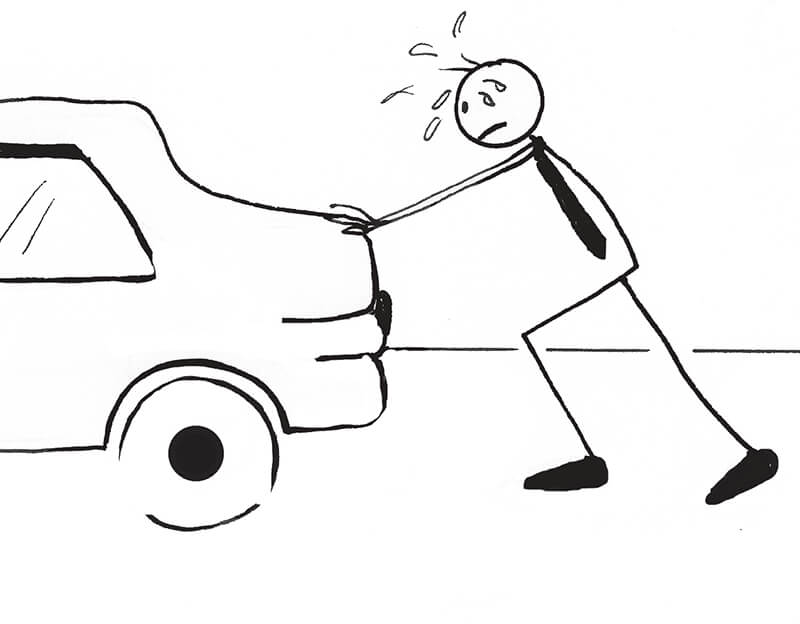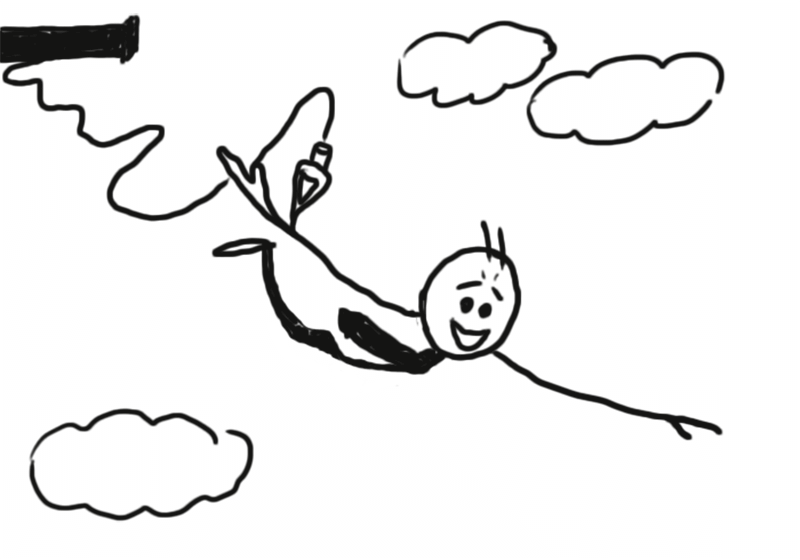Simple Past del verbo “to be”
Una volta imparato ad utilizzare il Simple Past in maniera generica, è importante osservare come questo venga coniugato nel verbo “to be” (ovvero il verbo “essere” in italiano) e i vari casi e le eccezioni che sono ad esso collegati. To be, infatti, è uno di quei verbi che vengono considerati irregolari, perché per formarlo non basta aggiungere la particella –ed alla fine di esso.
Se ripensiamo alla coniugazione del verbo al presente, abbiamo:
| I | am |
| You | are |
| He/she/it | is |
| We | are |
| You | are |
| They | are |
Al passato semplice, il verbo viene coniugato con:
I was [tooltip]io ero[/tooltip]
You were [tooltip]tu eri[/tooltip]
He/she/it was [tooltip]lui/lei/esso erano[/tooltip]
We were [tooltip]noi eravamo[/tooltip]
You were [tooltip]tu eri[/tooltip]
They were [tooltip]loro erano[/tooltip]
Notiamo quindi che, mentre al presente il verbo si coniuga per tutte le persone con “are”, con eccezione della prima persona singolare “io”, che vuole la forma “am”, al passato sia la prima persona singolare sia la terza persona singolare reggono la forma “was”, mentre tutte le altre quella “were”.
I was too tired to study. I decided to rest instead. [tooltip]Ero troppo stanco per studiare. Ho deciso invece di riposarmi.[/tooltip]
We were almost at home when the car ran out of gas. [tooltip]Eravamo quasi a casa quando la macchina è rimasta senza benzina.[/tooltip]

Frasi interrogative o negative
La struttura, nel caso delle frasi interrogative e negative, è la stessa che si usa per il presente. Nelle interrogative, quindi, si articola con verbo + soggetto + resto della frase.
Were you tired when you got home yesterday? [tooltip]Eri stanco quando sei tornato a casa ieri?[/tooltip]
Was he always this annoying? I really can’t stand him! [tooltip]È sempre stato così irritante? Non lo sopporto proprio![/tooltip]
Nelle negative, invece, la frase si ordina con soggetto + verbo + negazione + resto della frase. In questo caso, come anche per il presente, verbo e negazione possono essere contratti insieme:
Was not > wasn’t
Were not > weren’t
Queste contrazioni sono importanti perché vengono usate in maniera estremamente frequente, soprattutto nel linguaggio colloquiale. Le forme estese, al contrario, sono scelte quando ci si ritrova in contesti molto formali.
He wasn’t ready for the exam. That’s why he didn’t pass. [tooltip]Non era pronto per l’esame. È per questo che non l’ha passato.[/tooltip]
Mark and his wife weren’t home. I left a message for them. [tooltip]Mark e sua moglie non erano a casa. Gli ho lasciato un messaggio.[/tooltip]
È importante osservare come la forma estesa were not / was not viene utilizzata quando si vuole enfatizzare la negazione.
I swear I was studying. No you were not! I saw you playing with your phone. [tooltip]Giuro che stavo studiando. No che non lo stavi facendo! Ti ho visto giocare con il telefono.[/tooltip]
Per formare frasi interrogative negative, possono essere utilizzati due tipi di strutture:
Se si decide di usare il verbo e la negazione in forma estesa, si mette verbo + soggetto + negazione.
I stopped by your house yesterday and the lights were all out. Were you not home? [tooltip]Sono passato per casa tua ieri e le luci erano tutte spente. Non eri a casa?[/tooltip]
Se si decide di usare la forma contratta, invece, la struttura diventa verbo al negativo + soggetto.
I stopped by your house yesterday and the lights were all out. Weren’t you home? [tooltip]Sono passato per casa tua ieri e le luci erano tutte spente. Non eri a casa?[/tooltip]
Solitamente (anche se non sempre), questo tipo di strutture implica una domanda retorica.
Infine, il Simple Past del verbo “to be” può essere usato anche per dare risposte brevi e concise a delle domande. In questo caso, la struttura della risposta sarà “yes, + pronome + verbo” o “no, + pronome + verbo + negazione”.
Was Martha happy when she heard about your promotion? Yes, she was. [tooltip]Marta è stata felice quando ha saputo della tua promozione? Sì, lo è stata.[/tooltip]
Were you scared the first time you went bungee-jumping? No, we weren’t. [tooltip]Avevate paura la prima volta che avete fatto bungee-jumping? No, non ne avevamo.[/tooltip]

Short answer
La risposta breve si struttura nel seguente modo:
| AFFERMATIVA | NEGATIVA |
| Yes, pron. Personale sogg. + was/were | No, pron. Personale sogg. + wasn’t/weren’t |
Was Neil Young ill yesterday? Yes, he was. [tooltip]Neil Young era ammalato ieri? Si lo era[/tooltip]
Were they at your party last Sunday? No, they weren’t [tooltip]erano alla tua festa sabato scorso? No[/tooltip]
--- PER APPROFONDIRE L’ARGOMENTO ---
Nevertheless, to help us learn what’s right, let’s look at some possessives and double possessives that native speakers wouldn't use. It definitely sounds odd to say, “a car of Squiggly.” On the other hand, you could say, “a car of Squiggly's,” assuming he has lots of cars and you’re pointing out one of them. However, “a car of Squiggly's” doesn’t sound as natural to me as “one of Squiggly's cars.”